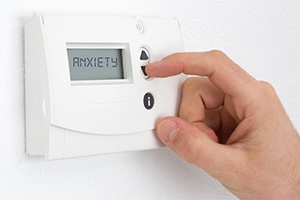How to Recharge Your Brain With a Power Nap
5 simple tips for energizing napping
 Taking power naps at the right time, for the right duration, makes the difference between groggy and get-up-and-go!
Taking power naps at the right time, for the right duration, makes the difference between groggy and get-up-and-go!4:30am. I was once again slumped on the sofa, eyes blinking heavily. Beside me, my four-week-old son was dozing in his pram.
Our son wasn't the best sleeper in those early days, so my partner and I would take turns staying up all night to rock him, back and forth, hour after hour. I have many fond memories of those early days and caught up on plenty of TV shows on Netflix, but it was also a time of overwhelming sleep deprivation!
The one thing that really helped me get through that marathon of sleepless nights was knowing how to take a quick, refreshing 'power nap' during the day.
How long should a power nap be?
A power nap is a short period of sleep that ideally lasts between ten and twenty minutes. Sleep researchers have found that naps shorter than this have very little benefit and longer ones can make you feel groggy and lethargic.
But timing is as important as length when it comes to power naps. You'll notice that during the day you naturally feel more 'zoned out' at times. At these times your brain is naturally trying to swing into right hemispheric dominance. If you jump on the nap train at this point, you'll be giving your tired brain just what it's asking for.
If you can fit a power nap into your day, the benefits are profound. Studies have found that taking a daytime nap can reduce stress, increase cognitive performance, boost your creativity, and may even reduce the risk of heart disease.
1. Practice a deep relaxation technique
Not everyone can take a nap at will. I know I certainly couldn't when I first tried.
I originally learned to nap by listening to lots of hypnosis recordings. By repeatedly training my mind to relax deeply, it became very easy for me to nap anytime, anywhere.
Here's the technique I now use to nap so you can practice it yourself:
- Close your eyes.
- Say to yourself in your mind, "After this ten-minute, deeply relaxing nap, I'd like to wake up filled with energy, enthusiasm. and mental clarity."
- Breathe slowly, smoothly, and evenly.
- Relax your muscles one by one, from the top of your head to the tips of your toes.
- Begin to visualize random, dream-like scenes. I might imagine I'm taking a cliff-top walk by the sea, gazing at a kite in the sky, or strolling through an empty city at sunrise.
- Gradually let your mind drift, letting go of any need to do anything or to make any effort.
At this point, I normally fall completely asleep. But if not, I just continue relaxing and daydreaming for a few more minutes. Either way, I still experience noticeable benefits afterwards. Then, almost exactly ten minutes after I started, I usually wake up spontaneously.
At first, you might find you don't automatically wake up after your set time period. So it's a good habit to set an alarm clock when you nap to ensure you don't oversleep. But after a while, you may find yourself naturally waking up after ten minutes every time you nap.
2. Create a soothing environment (if you can!)
There are certain things that tend to make it easier to doze off. When I take a power nap, I almost always put on a pair of headphones and listen to some relaxing music or a self hypnosis session (this also helps to block out any external noises).
Of course, it's great if you can also lie down in a quiet, darkened room, which will encourage your body to feel sleepy. Some people find it helpful to put on an eye mask for their nap to create the illusion of darkness.
But having a nice dark room for power napping simply isn't possible for many people, especially if you work in a busy office. So, it's also important to...
3. Let go of needing the perfect environment OR the perfect nap
You can learn to nap in more places than you might imagine.
I've actually taken naps whilst sitting on a crowded train in the London Underground. The seats aren't comfy. The sounds of the train are penetratingly loud. It's far from an ideal place for a snooze. But it can be done.
On sunny days, I've also sometimes sat on a park bench for ten minutes with my eyes closed, having a light, daydream-like doze. I don't usually nap as deeply in a public place like this, but I still consistently feel re-energized and invigorated at the end of the ten minutes.
Which brings me to another important point: taking a nap doesn't always mean you fall sound asleep. If you're in a light state of relaxation, casually daydreaming with your eyes closed, you're actually in the first stage of sleep, even though you might feel like you're still conscious and aware.
So, if you don't have the perfect place to nap properly during the day, at least try relaxing with your eyes closed for ten minutes - perhaps in a coffee shop, sitting in your car on your lunch break, or on the train home.
4. Give yourself time to learn how to do this
Some people say they don't know how to nap or just can't do it. The moment they close their eyes, they find their mind filled with mental chatter about all the things they should be getting on with.
It's actually completely normal to experience busy, chattering thoughts in your mind when you close your eyes. People who practice meditation often refer to this as 'the monkey mind'. You simply need to be patient with yourself and give yourself time to learn how to deeply relax your mind and body.
Just as it takes time for your body to adjust to a new time zone, so it can take a while to get used to power napping.
But napping is something your body already knows how to do. You naturally did it when you were a child and many cultures have a siesta in the afternoon, when it's customary to have a quick snooze.
Power napping is something anyone can do; you just need to give yourself time to learn how.
5. Prioritize your nap
Some people might think that they couldn't possibly make time for a power nap because they're far too busy. But the truth is that napping makes you more productive. In my experience, making time for a nap usually saves you time in the long run.
Think of it this way: a professional athlete will always schedule rest periods into her training cycles. If you over-train as an athlete, then you're being unprofessional, because your training will become sloppy and you'll be putting yourself at risk of injury.
Or by way of another analogy: a woodcutter who relentlessly swings his axe at log after log without pausing to take a breath will chop less wood in the long run than the woodcutter who stops every so often to sharpen his axe.
You can get a lot more done when your mind is clear, sharp, and buzzing with ideas. Taking a ten-minute power nap is the most natural, effective way of boosting your brain power so you can accomplish more each day.
Power nap for greater productivity
As for my life as a father? Well, my son recently had his first birthday and he's generally sleeping much better now. But last night happened to be a bad one. He was teething and crying and we were all awake half the night.
So before I wrote this article, I took a power nap that lasted only nine and a half minutes. It's amazing. I woke up feeling so much better, like I'd been away with the fairies for hours.
If you'd like a little help with your power naps, try our Power Nap download, which is specially designed to get you the benefits of a nap in a short time, and wake you up feeling refreshed and ready to go!





